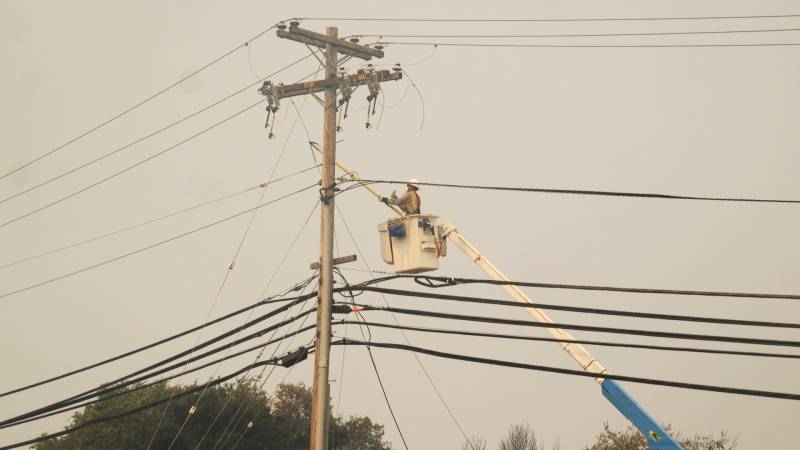PG&E and Gov. Gavin Newsom announced a deal Friday that removes one of the last hurdles for the nation's largest utility to emerge from a bankruptcy triggered by its massive liabilities from wildfires.
PG&E agreed to overhaul its board and operations, and to a process that would put the company up for sale — essentially allowing the state to take over — if it doesn't get out of bankruptcy by June 30.
The utility said in a bankruptcy court filing Friday that it will agree to increased regulatory oversight and commit billions of dollars in additional spending to prevent wildfires, meeting a critical demand by the governor.
"This is the end of business as usual for PG&E," Newsom said in a statement. "Through California's unprecedented intervention in the bankruptcy, we secured a totally transformed board and leadership structure for the company, real accountability tools to ensure safety and reliability and billions more in contributions from shareholders to ensure safety upgrades are achieved."
Newsom has unusual leverage over PG&E as it tries to emerge from one of the most complex bankruptcy cases in U.S. history. The company needs state approval of its bankruptcy plan to qualify for coverage from a $21 billion wildfire insurance fund that California created last summer. He rejected the utility's earlier plan in December and wouldn't agree to a revised version a month later.
Now, with Newsom's support, the company anticipates state regulators' approval "so that we can exit Chapter 11, pay wildfire victims fairly and as soon as possible, and participate in the state's Wildfire Fund," CEO Bill Johnson said in a statement.
The utility's outdated system triggered a series of catastrophic wildfires in 2017 and 2018 that killed so many people and burned so many homes and businesses that the company filed for bankruptcy early last year. PG&E left millions of Californians in the dark for days at a time last fall as it shut down power in a bid to prevent its equipment from sparking more wildfires.
The company on Friday agreed to put another $4 billion in equity into the settlement by halting any payment of dividends to shareholders for about the next three years.
It will use about $7.6 billion of shareholders' assets to repay or refinance some of its debt. And it will save about $1.4 billion by restructuring certain bonds that benefit ratepayers.

